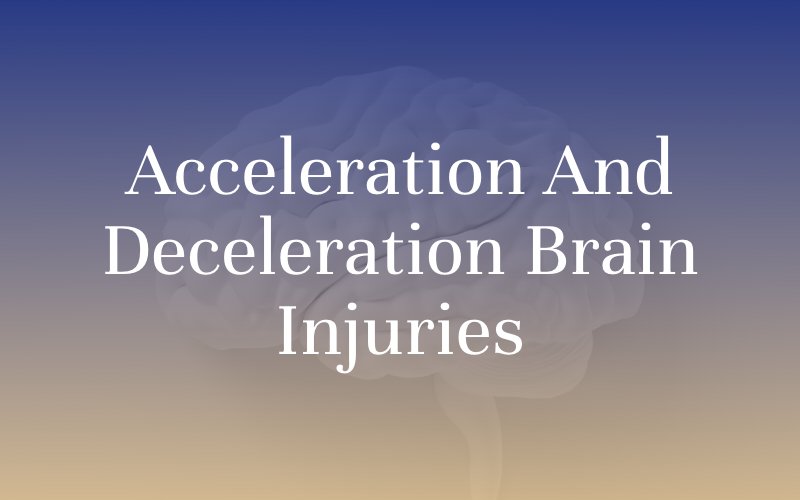
Acceleration and Deceleration Brain Injuries
Colburn Law
Posted in Brain Injury on February 3, 2022
Traumatic brain injuries (TBIs) send thousands of people to the hospital every single year. Damage to the brain can result in life-threatening complications and permanent disabilities, severely impacting victims’ lives. Many of these injuries occur during motor vehicle collisions.
Acceleration and deceleration brain injuries are especially common in car accidents. These injuries can lead to bleeding, bruising, and swelling in the brain, requiring immediate medical attention. If you develop an acceleration and deceleration brain injury following a car crash, you may be eligible for legal action.
Types of Acceleration and Deceleration TBIs

Acceleration and deceleration brain injuries occur when the head suddenly moves in an unnatural and violent manner. As a result, the brain can slide around inside of the skull, resulting in shearing and blunt force injuries. There are several types of acceleration and deceleration brain injuries, including contusions, brain bleeding, and diffuse axonal injury.
Diffuse Axonal Injury
The neurons in the brain are connected by cable-like structures known as axons. These structures are necessary to transmit electrical signals and help different parts of the brain communicate with each other.
A diffuse axonal brain injury occurs when the brain rapidly shifts inside the skull. Axon bundles tear, twist, or stretch, shearing the fibers. Diffuse axonal injuries are often fatal, and patients with severe damage require intensive rehabilitation and treatment. However, recovery is possible for mild cases.
Focal Contusions
Focal contusions involve swelling and bruising in very specific areas of the brain. They can involve coup injuries, where the contusion occurs on the part of the brain that suffered the trauma. Focal contusions also include coup-contrecoup injuries, where the brain suffers impact on both sides after it shakes back and forth during impact.
Intracranial Hematoma
Hematoma is another term for bleeding in the brain. Intracranial hematoma occurs inside of the skull, often as the result of an acceleration and deceleration brain injury. When the brain slams against the inside of the skull, it can suffer ruptures and other damage, leading to hematoma.
There are three types of intracranial hematomas.
- Subarachnoid hematoma: This damage occurs when a blood vessel is damaged in the posterior cranial fossa, which houses the cerebellum and brainstem.
- Epidural hematoma: This damage occurs when blood clots rupture and pool between the skull bone and the dura, which is a layer of connective tissue surrounding the brain.
- Subdural hematoma: This injury occurs when bridging veins rupture in the subdural space, which is a space that is opened when the dura is separated from the arachnoid mater, another membrane that surrounds the brain.
Without treatment, hematoma can cause extreme pressure in the brain. Many patients develop permanent complications if they survive the injury.
What to Do If You Experience Acceleration and Deceleration Brain Injury
Brain injuries are serious medical emergencies that require immediate treatment. If you are involved in a car accident, it is critical to go to the hospital as soon as possible and receive treatment for your injuries.
You should always go to the hospital, even if you do not feel hurt. Many people with brain injuries do not experience symptoms for a while following the accident. However, the longer that a brain injury goes untreated, the higher the risk of complications and long-term damage.
If someone else is at fault for your acceleration and deceleration brain injury, you may be eligible for compensation through an insurance claim or lawsuit. After seeking treatment, contact a local personal injury attorney to discuss your legal options.



